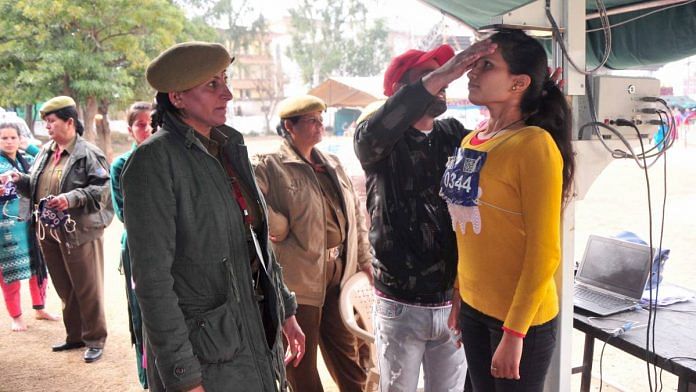New Delhi: The average height of Indian men and women has reduced over the past 10 years, with women in Scheduled Tribes (ST) suffering a particularly significant decline, a new study warns, calling for urgent attention to the alarming trend.
Researchers from Jawaharlal Nehru University (JNU) looked at data from consecutive National Family Health Surveys (NFHS) conducted by the health ministry to explore the average height differences across gender, wealth and social groups.
The team used the data from NFHS-II (1998–99), NFHS–III (2005–06) and NFHS-IV (2015–16) to examine the trends.
The study, published in the journal PLoS One, compared the age groups of 15–25 and 26–50 years across both male and female. The analysis found that while between NFHS-II and III, the average height of women across age groups improved significantly, it showed a decline between NFHS-III and IV in the 15-25 years age group.
Among men, both the age groups of 15–25 years and 26–50 years showed significant decline in average height — 1.10 cm and 0.86 cm, respectively.
“We believe, in the context of an overall increase in average heights worldwide, the decline in average height of adults in India is alarming and demands an urgent enquiry,” researchers said.
Also read: Caste discrimination – an overlooked factor in Indian kids’ stunted growth
The height difference
Between NFHS-III and IV, the average height of women in the age group of 15–25 years showed a decline by 0.12 cm. Moreover, the average height of women in the poorest wealth index category registered a significant decline of 0.57cm. The average height of Scheduled Tribe (ST) women in this age group also exhibited a significant decline by 0.42 cm.
“When average height of women in the age group of 15–25 years declined between the last two rounds of NFHS, decline in height was the most significant and also the highest among women from the scheduled tribe,” researchers said.
When it came to the 26–50 years age group, there was a significant improvement in the mean height by 0.13 cm, except for ST women who exhibited a decline.
Women from the poorest wealth index category also suffered a similar fate, when between NFHS-III and IV, their height registered a significant decline across both the age groups of 15–25 years and 26–50 years.
However, tribal women “persistently suffered the most negative outcome”.
“Their average height, between NFHS-II and III, did not register any significant increase, while it improved significantly for the rest of the women,” the researchers said.
For men, the average height declined significantly across all age groups, castes, tribes and residence. Maximum significant decline was observed among both the poorest and the richest wealth index categories.
Also read: Nutrition experts add 5 kg to ideal weight of Indians — 65 kg for men, 55 kg for women
Adolescent nutrition needs attention
According to the team, this decline in height highlights the need to revisit the role of various socioeconomic determinants of height.
A majority of the Scheduled Tribes, one of the most economically and educationally disadvantaged groups in India, live in rural and isolated areas with poor government services.
The researchers said that there is enough evidence to suggest that large sections from the SC and STs continue to face discrimination and deprivation, possibly resulting in the impact on their height.
A previous study that looked at NFHS-III data showed that an average five-year-old ST girl is 2 cm shorter than an average general caste girl. These differences arise from the differences in socioeconomic status between tribal children and their peers from general castes.
The JNU researchers also pointed out that while there is considerable research on childhood undernutrition, the role of adolescent nutrition on adult height gain is less explored.
Children gain 50 per cent of adult weight and 20 per cent of adult height during adolescence, yet most government schemes focus on childhood nutrition.
(Edited by Manasa Mohan)
Also read: NFHS shows stunting increased in ‘better-performing’ Kerala, Goa. India must not lose focus



